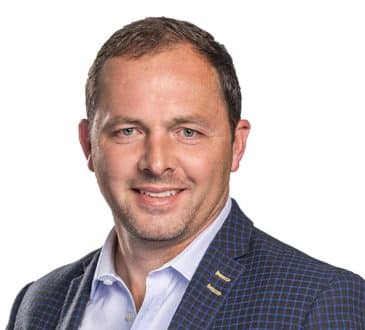A Trailblazer, a Hero, and a Crook Walk Into a Salad Oil Swindle… Lessons About Vision, Character, Greed, and Fear

Villain, Visionary, and Oracle: This story brings together a villain, a visionary, and arguably the greatest investor of all time. The villain was Tino DeAngelis, allegedly involved in black market sales during World War II. He repeatedly paid $100,000 fines for producing and exporting substandard cooking fat products. DeAngelis later created Allied Crude Vegetable Oil Refining Corporation (Allied). Allegations of fraud and underworld connections followed him.
The visionary was Howard Clark, who in 1960 became chief executive of American Express Company (Amex), which was dominant in travel and financial services. His priority: focusing on the viability of money-losing American Express credit card. Next: focusing on marginally profitable Amex subsidiaries including American Express Field Warehousing Company (AEFW). Of 500 accounts, all profits were from two companies, owner by DeAngelis, including Allied.
In 1962, Warren Buffett, age 31, amalgamated partnerships into Buffett Partnership Ltd. (BPL). Buffett followed Benjamin Graham’s value-investing. He viewed stock investing like owning a business, but only at a reasonable price. Prior to Buffett’s 1964 Amex investment, he pushed for board representation or control. Starting with Amex, Buffett would uncover undervalued firms that were fundamentally good businesses with capable managers, then let them do their jobs.
The Swindle that Damaged Amex
In June 1960, Donald Miller, chief executive of AEFW, received a tip about Allied storage tanks, “The biggest hoax ever is being pulled because there is water in the tanks we are counting as oil.” Miller ordered a surprise inspection. Unbeknownst to investigators, DeAngelis had created an elaborate network of pipes with false compartments and special sampling tubes. Not uncovering the scam, business between Allied and AEFW continued as usual.
From 1961 to 1963, Allied increasingly bought oil futures, anticipating heavy demand by foreign countries. But then prices declined and Allied needed to provide more money in margin accounts. In November 1963, commodities exchange investigators demanded to see Allied’s records. The gig was up. Allied filed for bankruptcy. AEFW’s warehouse receipts had totaled twice as much vegetable oil as all the oil in the U.S.
Amex was a joint stock company, the last large U.S. public company with unlimited liability. Soon after Allied went bankrupt claims against AEFW were more than $150 million, close to Amex’s stock value of $162 million. AEFW was a separately incorporated subsidiary, but there was some uncertainty about Amex’s potential liability.
Clark pondered whether Amex should compensate losses at AEFW. If Amex denied liability for AEFW, banks would suffer losses. But they sold Amex’s travelers cheques. Conversely satisfying bankers might upset shareholders. On November 27, 1963, Clark announced: “If our subsidiary should be liable for amounts in excess of its insurance coverage and other assets, Amex feels morally bound to do everything it can to see that such excess liabilities are satisfied.”
Buffett Invests
The swindle started featuring in newspapers on November 20, 1963. Two days later, President Kennedy was assassinated. Kennedy’s death relegated the Great Salad Oil Swindle to the back pages. Intrigued by the possibly buying Amex cheaply, Buffett tracked its stock price. The price continued to drop. The survival of Amex was in doubt. By June 1964, the price had dropped 43 percent since the scandal broke.
Buffett wondered what impact the scandal would have on Amex’s reputation. Trust mattered. Buffett needed facts. So he visited restaurants, other places that accepted Amex cards and cheques, and banks. Buffett concluded that while Wall Street had punished Amex, its reputation hadn’t been tarnished on Main Street. By June 1964, he invested $3 million in Amex, BPL’s largest single holding, at 17 percent.
Some shareholders argued Amex had no legal obligation to settle liabilities of AEFW. Buffett felt management was doing the right thing and supported Clark. Buffett was taking a long-term perspective, willing to sacrifice short-term profitability. He was right. Two-and-a-half years after Buffett started investing, Amex’s stock was up 124 percent. This was arguably one of his best investments ever.
By 1967, Amex negotiated a $31.6 million (after-tax) settlement with creditors. Clark later realized the swindle was the greatest public-relations event in its history with favorable press coverage. Later Clark was asked if a salad oil swindle every few years might be a clever idea. He replied: “I don’t think I have enough good years of my life to give away for another swindle.”
Lessons Learned
Character and reputation matter. DeAngelis had a long record of unscrupulous behavior. Yet it didn’t deter other companies from dealing with him. Why did banks and commodity exporters increasingly lend to DeAngelis’s businesses when rumors had swirled for years that a swindle was happening at Allied. Partly, it was tunnel vision. One lender commented, “We didn’t deal with this Tino character. We dealt with Amex.” There’s no substitute for your own analysis. Buffett did a lot of legwork before investing. He didn’t simply rely on a hunch.
Clark made a bold decision by pronouncing that Amex was “morally bound” to cover AEFW’s liability. He recognized the importance of a brand’s reputation. He also didn’t let a good crisis go to waste. Both Clark and Buffett recognized that long-term value trumped short-term profit.
What was the root cause of the scandal? Incentives and motives matter. To survive, AEFW needed to show consistent profits. This may have caused Donald Miller to overlook DeAngelis’s character flaws, since his dealings with Allied were profitable. As author Norman Miller concluded, “Tino succeeded because bankers, brokers and business[people], despite the glaring indications that they were dealing with a crook, could not resist the bait of big profits…The reason they were convinced that Tino’s deals were good can be stated in one word—greed.”
Those bankers, brokers, and businesspeople were all greedy until they feared they would lose it all. Buffett turned that premise on its head when he famously proclaimed his investing goal: “We simply attempt to be fearful when others are greedy and to be greedy only when others are fearful.” Stocks may become overvalued when everyone wants to invest in them, and undervalued when no one wants them.
Excerpted with permission from the publisher, Wiley, from Trailblazers, Heroes, and Crooks: Stories to Make You a Smarter Investor by Stephen R. Foerster.
Bring the best of the CEOWORLD magazine's global journalism to audiences in the United States and around the world. - Add CEOWORLD magazine to your Google News feed.
Follow CEOWORLD magazine headlines on: Google News, LinkedIn, Twitter, and Facebook.
Copyright 2025 The CEOWORLD magazine. All rights reserved. This material (and any extract from it) must not be copied, redistributed or placed on any website, without CEOWORLD magazine' prior written consent. For media queries, please contact: info@ceoworld.biz








